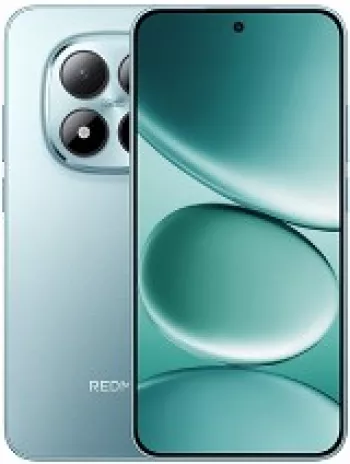
Overview of Xiaomi Redmi Note 3 (MediaTek)
The Xiaomi Redmi Note 3 (MediaTek) is a mid-range smartphone that was announced and released in November 2015. It boasts a range of features that catered to the needs of users looking for a budget-friendly yet capable device. Although it has been discontinued, it left a mark in the smartphone market by offering decent specifications at an attractive price point.
Design and Build
The Xiaomi Redmi Note 3 features a sleek and sturdy design with dimensions measuring 150 x 76 x 8.7 mm and a weight of 164 g. It has a solid build and comes with a metallic finish, giving it a premium look and feel despite being a budget device. The phone is equipped with a dual SIM (Micro-SIM, dual stand-by) functionality, allowing users the flexibility to use two numbers simultaneously.
Display
The smartphone sports a 5.5-inch IPS LCD display with a resolution of 1080 x 1920 pixels, providing a pixel density of around 403 ppi. The screen-to-body ratio is approximately 72.4%, which is adequate for a comfortable viewing experience. Colors on the display are vivid with decent contrast ratios, although the sunlight readability could have been better, with a contrast ratio of 2.249 under sunlight.
Performance
Powering the Redmi Note 3 is the Mediatek MT6795 Helio X10 chipset, a 28 nm octa-core processor clocked at 2.0 GHz based on Cortex-A53 architecture. The GPU is a PowerVR G6200. The smartphone is available in two variants in terms of memory: one with 2GB of RAM and 16GB of internal storage, and another with 3GB of RAM and 32GB of internal storage. Unfortunately, there's no card slot for expandable storage. In terms of performance, the Redmi Note 3 scores 1018 in Basemark OS II 2.0 and 8540 in Basemark X.
Camera
The Xiaomi Redmi Note 3 features a 13 MP rear camera with an f/2.2 aperture and phase detection autofocus (PDAF). The camera setup includes Dual-LED dual-tone flash and supports HDR and panorama mode. It offers Full HD video recording at 1080p@30fps. The front camera is a 5 MP shooter with an f/2.0 aperture, also capable of recording at 1080p@30fps. Overall, the camera performance is decent, producing good quality images in well-lit conditions, although low-light performance isn't as strong.
Battery Life
The device houses a non-removable Li-Po 4000 mAh battery, which is quite robust for a mid-range phone. It supports 10W wired charging. The standby time is up to 264 hours on 3G, and it offers up to 60 hours of music play. In terms of practical usage, the battery life is impressive with an endurance rating of 72h.
Software
Originally, the Redmi Note 3 runs on Android 5.0.2 Lollipop with Xiaomi's MIUI 7 on top. MIUI is known for its user-friendly interface and offers a range of customization options and features that enhance the overall user experience, albeit with some bloatware.
Connectivity
The smartphone supports GSM, HSPA, and LTE networks, with 4G bands covering a wide range. It features Wi-Fi 802.11 a/b/g/n/ac, dual-band, Wi-Fi Direct, and hotspot capabilities. For Bluetooth connectivity, it uses version 4.1 with A2DP and LE. Location services are supported through GPS, GLONASS, and BDS. The device also includes an infrared port, stereo FM radio with recording, and microUSB 2.0 with OTG support, although NFC is not available.
Additional Features
Security on the device is enhanced by the rear-mounted fingerprint sensor, which adds a layer of protection and convenience. Other sensors include an accelerometer, gyro, proximity, and compass. The audio quality is fair, with the loudspeaker performing adequately for basic needs. The phone also includes a 3.5mm audio jack, maintaining compatibility with traditional wired headsets.
Color Options and Price
The Xiaomi Redmi Note 3 was available in a variety of color options, including Silver, Gray, and Gold. At launch, the device was priced around 180 EUR, making it an attractive option for budget-conscious consumers seeking competitive specifications.
Conclusion
In summary, the Xiaomi Redmi Note 3 (MediaTek) offered a strong combination of performance, design, and battery life at a competitive price point, making it a popular choice among users at the time of its release. Although it was eventually discontinued, the device showcased Xiaomi's ability to deliver substantial value in the mid-range market, setting a standard for future releases.
Key Features of Xiaomi Redmi Note 3 (MediaTek)
- Network Technology: GSM / HSPA / LTE
- Display: 5.5 inches IPS LCD, 1080 x 1920 pixels, ~403 ppi
- Chipset: Mediatek MT6795 Helio X10 (28 nm)
- CPU: Octa-core 2.0 GHz Cortex-A53
- Internal Memory: 16GB 2GB RAM or 32GB 3GB RAM
- Main Camera: 13 MP, f/2.2, PDAF, Dual-LED dual-tone flash
- Selfie Camera: 5 MP, f/2.0
- Battery: Li-Po 4000 mAh, non-removable
- WLAN: Wi-Fi 802.11 a/b/g/n/ac, dual-band
- Bluetooth: 4.1, A2DP, LE
- Sensors: Fingerprint (rear-mounted), accelerometer, gyro, proximity, compass
- Infrared Port: Yes
- Radio: Stereo FM radio, recording
- USB: microUSB 2.0, OTG
- Available Colors: Silver, Gray, Gold
- Price: About 180 EUR
Disadvantages of Xiaomi Redmi Note 3 (MediaTek)
- No NFC Support
- No Card Slot for Expandable Storage
- Non-removable Battery
- Outdated Operating System (Android 5.0.2 Lollipop)
- Discontinued Status
- Limited Internal Storage Options (16GB or 32GB)
- Basic 5 MP Selfie Camera
- Slow Charging (10W)























View Also
More Phones
All Rights Reserved +14300 Phones © Mobilawy 2025

























